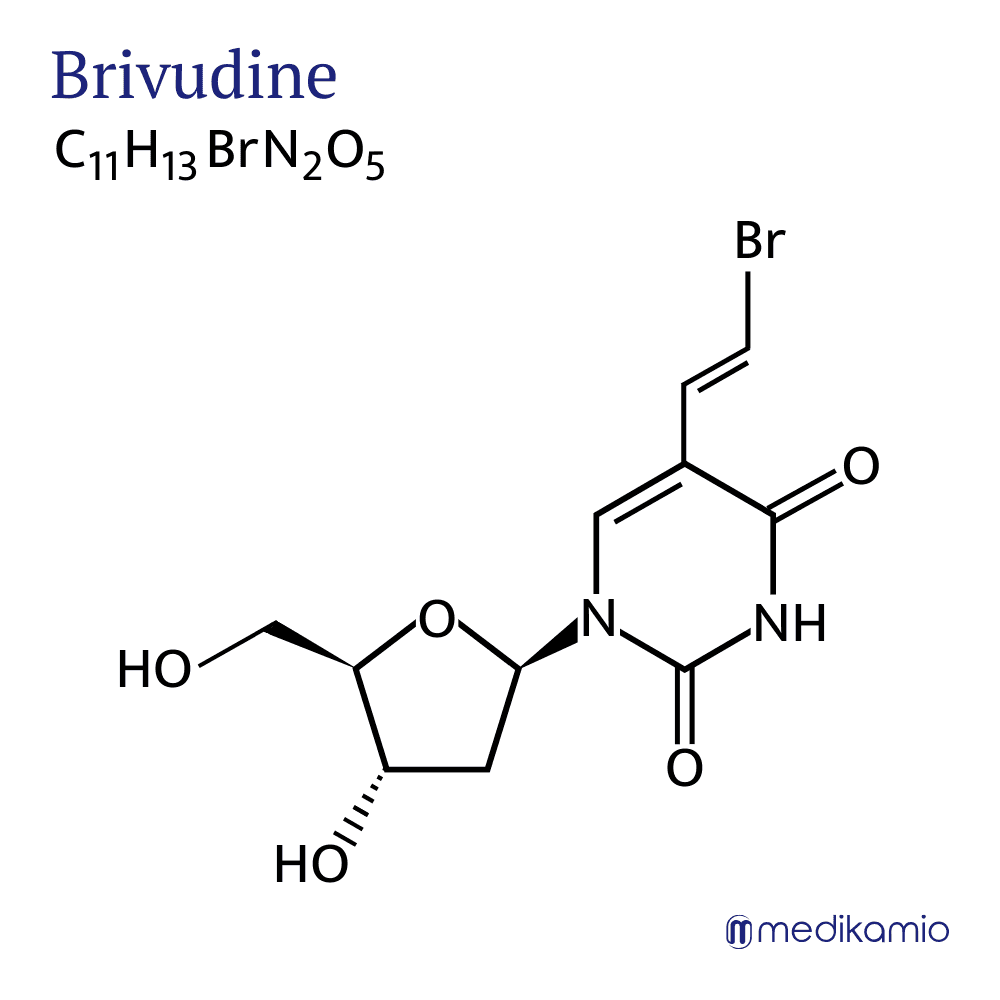Basics
Brivudine is an active ingredient that is used to treat viral diseases. It is an antiviral agent and is used specifically for shingles, which is caused by the herpes zoster virus . Brivudine inhibits the multiplication of viruses, thereby reducing the viral load. The active ingredient is also a prodrug and is only converted into the active form in infected cells. A prodrug is an inactive substance that is only converted into its active form in the body, where it is supposed to work.

